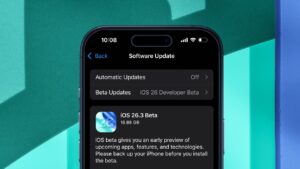


Spark can quickly find registration patterns in your event data, pointing out trends and suggesting segmentation strategies and messages that motivate prospective attendees to action.
When Convene asked marketing and technology consultant Nick Borelli, who leads workshops for event professionals on AI tools, including PCMA’s Spark, to name a topic that resonates strongly with his audiences, he didn’t hesitate: It’s using AI to analyze their events’ registration patterns, since most contend with a high percentage of late registrations. Event data company Bear Analytics confirms that trend, finding, on average, during the first nine months of 2025, 62 percent of attendees registered eight or fewer weeks before events — and 21 percent in under two weeks. And according to Maritz’s 2024 “Registration Insights Reports,” an “astounding” 43 percent of conference-goers register within four weeks of an event.
Nick Borelli
Those compressed timelines create a ton of stress for planners, said Borelli, president of Borelli Consultants, including fears of not reaching housing numbers and F&B minimums. And since the last weeks of registration are a make-or-break period for attendee numbers, it makes decisions about how to allocate marketing resources critically important, he said. To be as effective as possible, he added, event professionals must be able to personalize messages to various segments of their audiences, and to understand as much as possible about which marketing messages are likely to be effective for what audiences and the best time to send them.
In his experience, few associations have access to data analysts who could give them insights into registration patterns at their events. Many wing it, he said, looking back only at registration from the last year, which can’t show them consistent trends, and send “the same 30 emails in their campaigns, the same volume at the same time, and then maybe, at best, switch up the messaging” to highlight different unique selling propositions.
Your Own Data Analyst
The good news, Borelli said, is that AI can perform that analysis. By uploading years of registration data in Spark, in a short amount of time, the tool can deliver high-level insights about registration patterns based on the information in your spreadsheets. It’s good to arm yourself with those, he said, but the real value lies in asking follow-up questions about the data, like: What are the groups of people based on this data? Show me the attendee types that would be most likely to register in the first — and last — month. Or, Show me the relationship between how far away people live from the event location and when they register. What are the attendee groups with no registration patterns? “What fuels all of this is curiosity,” Borelli said, “and what’s great about Spark, is not only does it identify trends and attendee groups but also proposes graphs that show what kind of marketing segmentation might reach them.”
- Claim or renew your subscription to Convene.
- Want deep-dive insights on events delivered to your inbox? Sign up for our newsletters.
Once you’ve identified the most valuable trends in your registration data, you can ask Spark to design personalized email messages for each segment, with timelines most likely to create urgency, he said. No one’s cracked the code on how to get people to register earlier, Borelli said, “but there are people wired to do so.” Finding them — and thinking about what motivates those who register later — is much more effective than a budget-blowing, “shotgun” approach, he said.
Looking Inward
Some trends in the timing of event registrations are fairly predictable, said Borelli. For example, there’s a correlation between years of membership in an organization or years attending an event to early registration. Prospective attendees with certain senior-level job titles — who are more concerned about the opportunity costs of being out of the office and are less sensitive to price — along with first-time attendees and those within driving distance of events are more likely to register late. And, according to Maritz’s 2024 “Registration Insights Report,” attendees in sectors that are made up of “rule-followers” — such as education, health care, legal, or financial professionals — are less likely to register late.
People often ask Borelli to “just tell them the patterns” behind event registration and how and when to best reach different segments. His answer: “It depends. From industry to industry, it’s very different,” depending on specific events and attendee bases. There are macro trends that emerge from large-scale studies of event registration data, he said, but they “still pale in comparison to analyzing your own data.”
Barbara Palmer is Convene’s deputy editor.
On the Web
- Learn more about Spark and Destinaitor at sparkit.ai and destinaitor.com.
- Download the 2024 “Maritz Registration Insights Report.”







